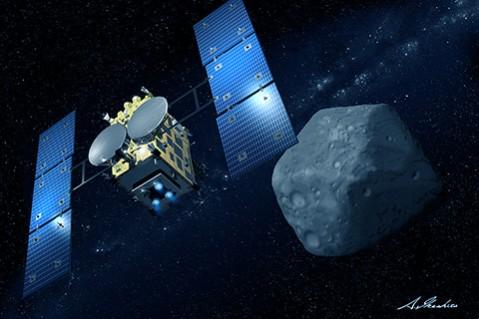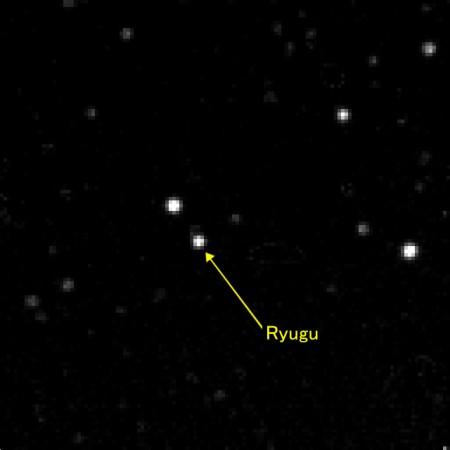
Japan's sample return mission Hayabusa2 has nearly reached its target- asteroid Ryugu. It was launched December 2014 and has been hurtling toward the space rock for five years now.
Hayabusa2 is a follow up to the first-ever mission to successfully return a sample from asteroid Itokawa, reports NASA spaceflight. The mission is intended to bring back samples from the asteroid which includes rocks using an impactor to drill and collect material from just below the rock's surface and bring it back to Earth.
It is not clear at this time if the mission will serve as a precursor to the up and coming asteroid mining industry which is touted to create the worlds first trillionaire.
The probe, is a 600-kilogram spacecraft based on the original Hayabusa craft, with some much-needed upgrades, notes the report. Japan's first attempt at bringing samples back to Earth was successful in bringing back samples, but it was not without its difficulties.

By the time Hayabusa craft reached its target, "rubble pile" asteroid Itokawa, there were several problems with the onboard systems. A solar flare, notes NASA, damaged the craft and one of its four ion engines was malfunctioning. All this meant the spacecraft that was supposed to land on the asteroid missed its target in its first try and hurtled off into deep space. When it finally made the landing, its sample-collecting mechanism was not working properly.
Its troubles did not end there, notes the report. On the way back to Earth, the malfunctioning engine also suffered leaks and another engine failed entirely. The craft then was lost as communications to the craft was not happening for several weeks after a second landing on the asteroid. It did, however, make it back to Earth, carrying with it 1,500 microscopic samples. It landed in Australia in 2010, notes the report.
To avoid most of the mechanical faults, the Hayabusa2 was built with a number of fail-safes as standard. This time, the spacecraft had an additional reaction wheel, to a total of four. Higher thrust ion engines were also incorporated into the design. This craft even had a backup sampling system. Everything is going as per plan and Hayabusa2 is reported to be in good health.
Powered through two solar panels, it uses one ion engine using xenon as the propellant. Ion engine technology that went into both the Hayabusas was reportedly first developed for the Deep Space One spacecraft as an experiment. This type of engine has low thrust, explains NASA, but it is continuous and will accelerate the spacecraft to massive speeds easily and effectively.
The craft also has what is called MINERVA "hoppers" that will land and jump to different spots on the rock and collect samples and study it with cameras and thermometers, notes the report.















